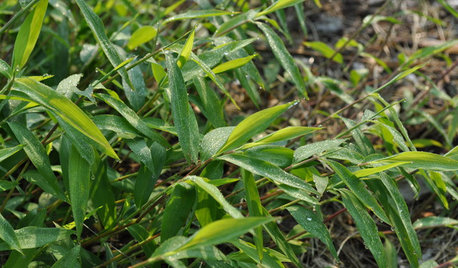Northeastern lawn help, seed / crabgrass preventer + aerate / thatch
Mark D
7 years ago
Related Stories

GRASSESHow to Rock a Lawn
Weekend Project: The key to healthy grass begins with the soil. If turf works for you, here’s how to fix it and keep it looking its best
Full Story
GARDENING GUIDESHow to Fix Bare and Yellow Lawn Spots
Restore your turf’s good looks by reseeding unsightly patches
Full Story
EDIBLE GARDENSNatural Ways to Get Rid of Weeds in Your Garden
Use these techniques to help prevent the spread of weeds and to learn about your soil
Full Story
GARDENING GUIDESHow to Switch to an Organic Landscape Plan
Ditch the chemicals for a naturally beautiful lawn and garden, using living fertilizers and other nontoxic treatments
Full Story
GARDENING GUIDESThe Essential Weed Hit List
Learn how to recognize and control 5 weedy plants that have achieved invasive status throughout the U.S.
Full Story
GARDENING GUIDESGarden Myths to Debunk as You Dig This Fall and Rest Over Winter
Termites hate wood mulch, don’t amend soil for trees, avoid gravel in planters — and more nuggets of garden wisdom
Full StoryMore Discussions







dchall_san_antonio
Mark DOriginal Author
Related Professionals
Maple Valley Landscape Architects & Landscape Designers · Arnold Landscape Architects & Landscape Designers · Vernon Hills Landscape Architects & Landscape Designers · Mooresville Landscape Contractors · Westwood Landscape Contractors · Biloxi Landscape Contractors · Cambridge Landscape Contractors · Chattanooga Landscape Contractors · Danvers Landscape Contractors · Fort Mill Landscape Contractors · Lemay Landscape Contractors · San Bruno Landscape Contractors · Eastvale Swimming Pool Builders · South Miami Heights Swimming Pool Builders · West Hollywood Swimming Pool Buildersdchall_san_antonio